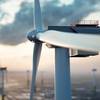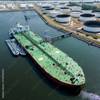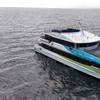There is a growing interest in the fuel efficiency of ships because of fuel prices, climate change and energy security issues. This has resulted in, amongst other things, a regulation governing the design efficiency of new ships called the Energy Efficiency Design Index (or EEDI for short).
As of 2013, new ships are required to have an EEDI that meets or exceeds a target.
The required EEDI is set as a percentage efficiency improvement relative to a baseline constructed from the average design efficiency of ships that have entered the fleet in the period 1999-2008. The percentage improvement will increase from 0% in 2013 (all ships have to be as efficient as the average of ships built between 1999 and 2008) to 30% from 2025 onwards.
The Marine Environment Protection Committee (MEPC) of the International Maritime Organization (IMO) is currently engaged in a review of the 2020 target. One of the main questions being addressed is whether the stringency of the regulation should be retained or amended.
Another issue of general interest is the effectiveness of existing EEDI targets in driving design efficiency improvements.
This study analyses which factor or factors have contributed to changes in the average design efficiency over time and what their relative importance has been.
The key findings of this study are:
* All ship types analysed here show a clear pattern of design efficiency changes, in which the average design efficiency of new ships improved considerably in the 1980s, deteriorated after 1990 and improved in recent years.
*Changes in ships design speeds, and in the power required to overcome the main component of resistance, viz. the frictional resistance, can only explain a fraction of the changes in the design efficiency.
* Other elements of ship design have historically been more important, such as hull, propeller and rudder design.
* Historically, fuel price and freight rates have been major drivers of fuel efficiency.
*The efficiency changes witnessed in recent years appear to be the result of high fuel prices rather than of regulation. The impact of the EEDI regulation may become more important in the coming years as a result of the lower fuel prices and the increased stringency.
The design efficiency of new ships improved significantly in the 1980s before peaking in the 1990s and then deteriorating after that. Figure shows how the average design efficiency of new ships has changed over time for bulk carriers.
A similar pattern can be observed for tankers and container ships. The changes in design efficiency were found to reflect changes in market circumstances. Higher fuel prices make fuel-efficient ships more attractive, because efficiency reduces the total cost of ownership. Because in general fuel-efficient hull designs are more expensive to build, the payback period of the additional capital expenditure is shorter when fuel prices are high.
(Source: "Historical Trends in Ship Design Efficiency" by CE Delft)













